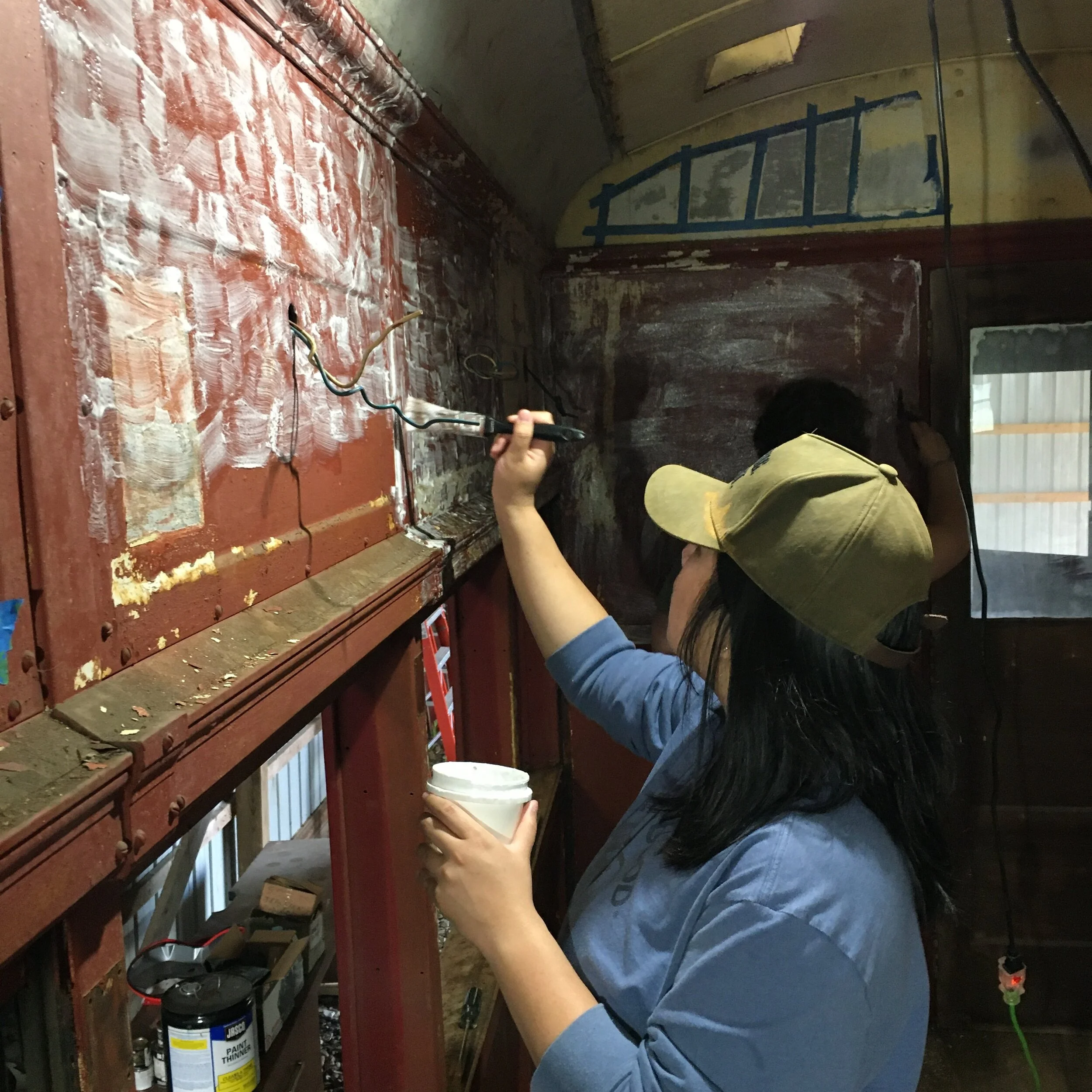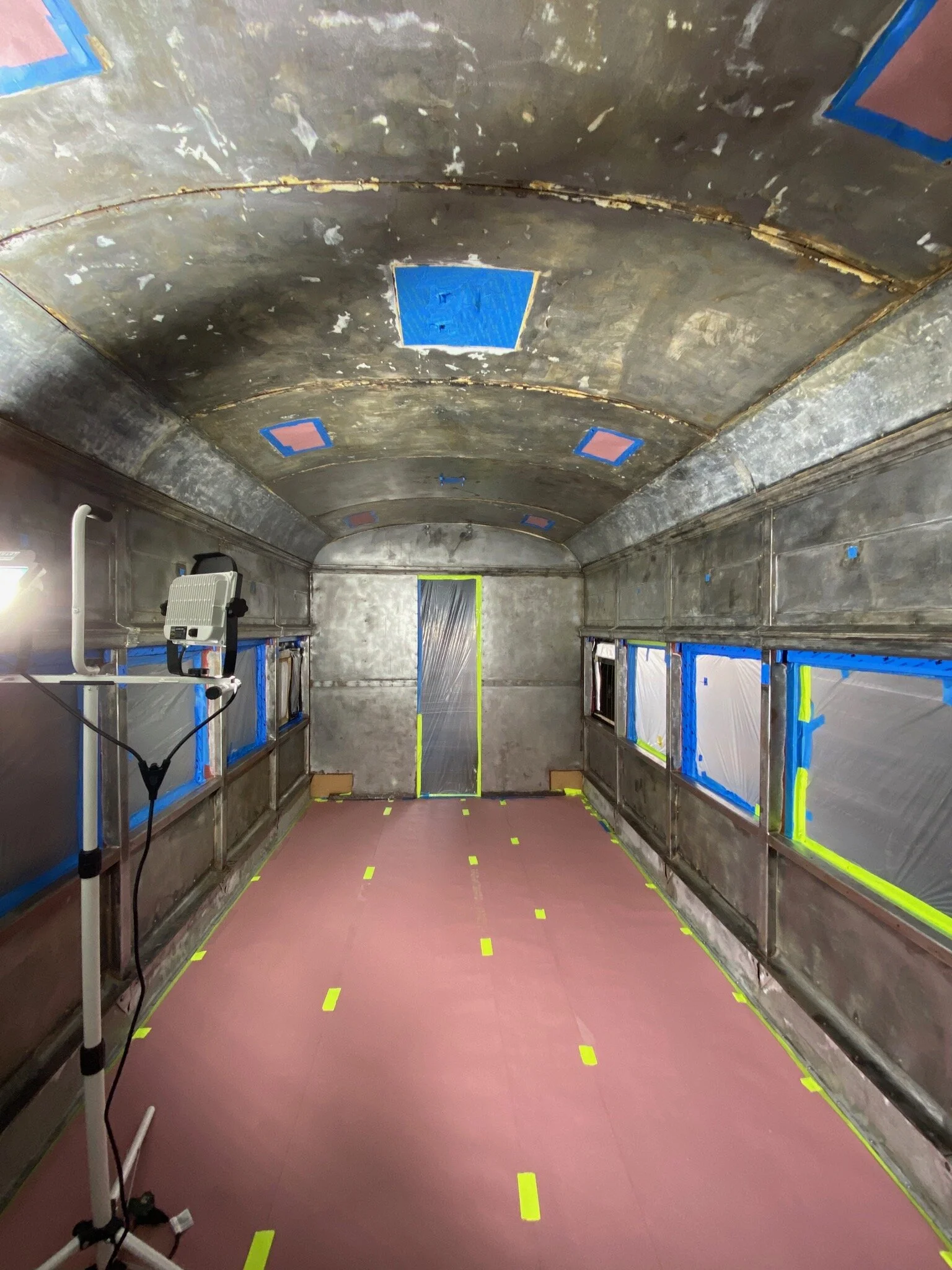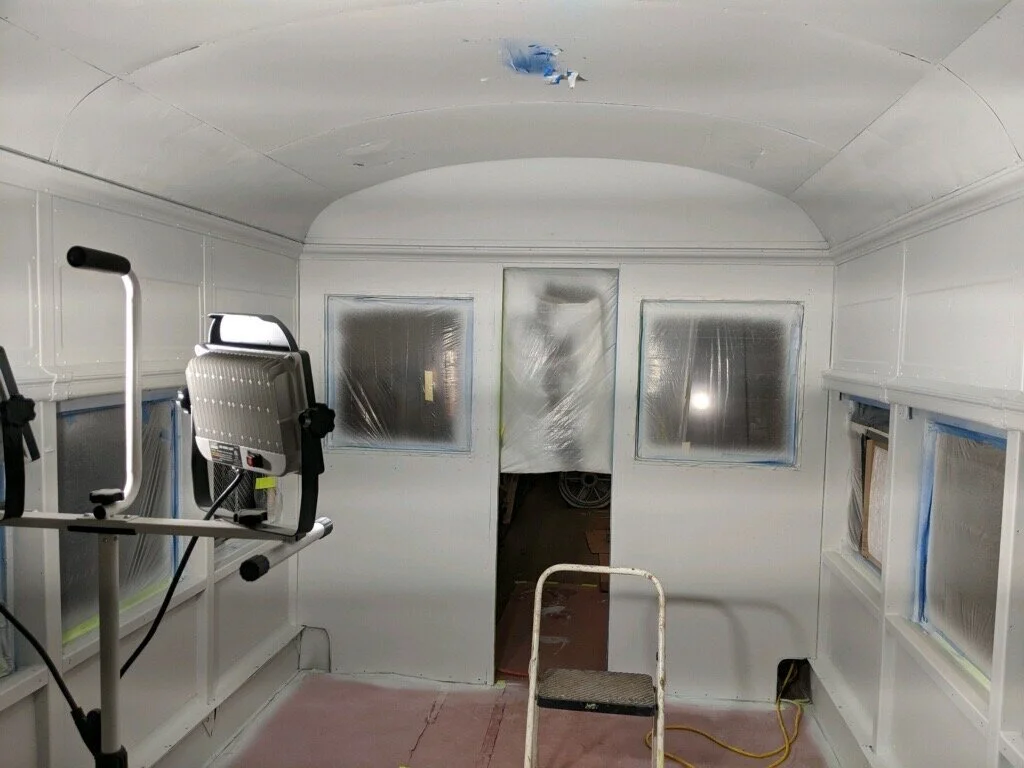A Year for the History Books
Union Traction Co. No. 427, an identical sister to No. 429 and first car in the series, pauses for a publicity photo in the 1920s at Anderson, Ind., where the Union Traction Co. shops and headquarters were located.
2020 has been a year for the history books. As Hoosier Heartland Trolley Co. works in earnest to revive one of Indiana’s last electric railway cars, history is being made, preserved, and revived - telling the stories of Hoosier triumphs and struggles nearly a century apart. As with all nonprofit organizations during this time, challenges to HHTC are no exception.
HHTC’s tremendous volunteers have worked on average three to four days per week, collaborating in small groups with COVID-19 precautions. Careful planning and project management has enabled the near completion of Phase One, cosmetic restoration of the car’s interior smoking section, along with the beginning of Phase Two, mechanical and electrical restoration of the car to operating condition.
New HHTC volunteer, Joey, applies paint stripper to the walls. While Joey doesn’t have previous experience in paint preparation, she’s eager-to-learn and is excited to get 429 running across the Indiana countryside again.
Thanks to the generosity of the Tom E. Dailey Foundation, the Indiana Historical Society, Lilly Endowment, Inc., and donors like you, Electrify 429 has moved Union Traction interurban No. 429 closer to revival. A preserved Hoosier treasure, No. 429 will serve Indiana communities for decades to come as an educational and economic development asset.
The HHTC team hopes this update inspires you to join the fun in-person or make a tax-deductible contribution to keep the momentum moving forward. In-kind contributions, such as electrical upgrades made to our restoration facility by a generous family hosting our organization, are the kind of support that makes this work possible. This organization exists because of and for the community.
Phase One
No. 429 as acquired in 2018. The car was used as storage and kept in the back of a pole barn. Insulation can be seen in a pile at the end of the car, which had to be cleaned up and removed to begin restoration of the car’s smoking section (far end of car).
Phase One, the cosmetic restoration of No. 429’s smoking section, has been a detail-oriented, time-consuming endeavor. The restoration originally initiated in the 1970s combined with long-term storage left sandblasting grit in ceiling seams, falling and corroding ceiling panels, unfit wiring, and a rough interior. Contrasting with the desire for a factory-new faux-wood grain interior, complete with brown linoleum floors, mahogany baton strips, period advertising, original light fixtures, and other features, the condition as found left much to be desired.
Wiring was tested as the project progressed, replacing old wiring with new, railroad-grade wiring. In this picture, half of the new wiring in the smoking section has been installed and some of the original light fixtures are illuminated for show.
Fall and winter 2019 saw the installation of new, railroad grade wiring, a necessary task prior to completing detailed interior work. This time also saw a thorough analysis of the interior alongside intensive research utilizing archives across the country. A historically authentic restoration using period materials and processes is a process outlined in HHTC”s collection management policy.
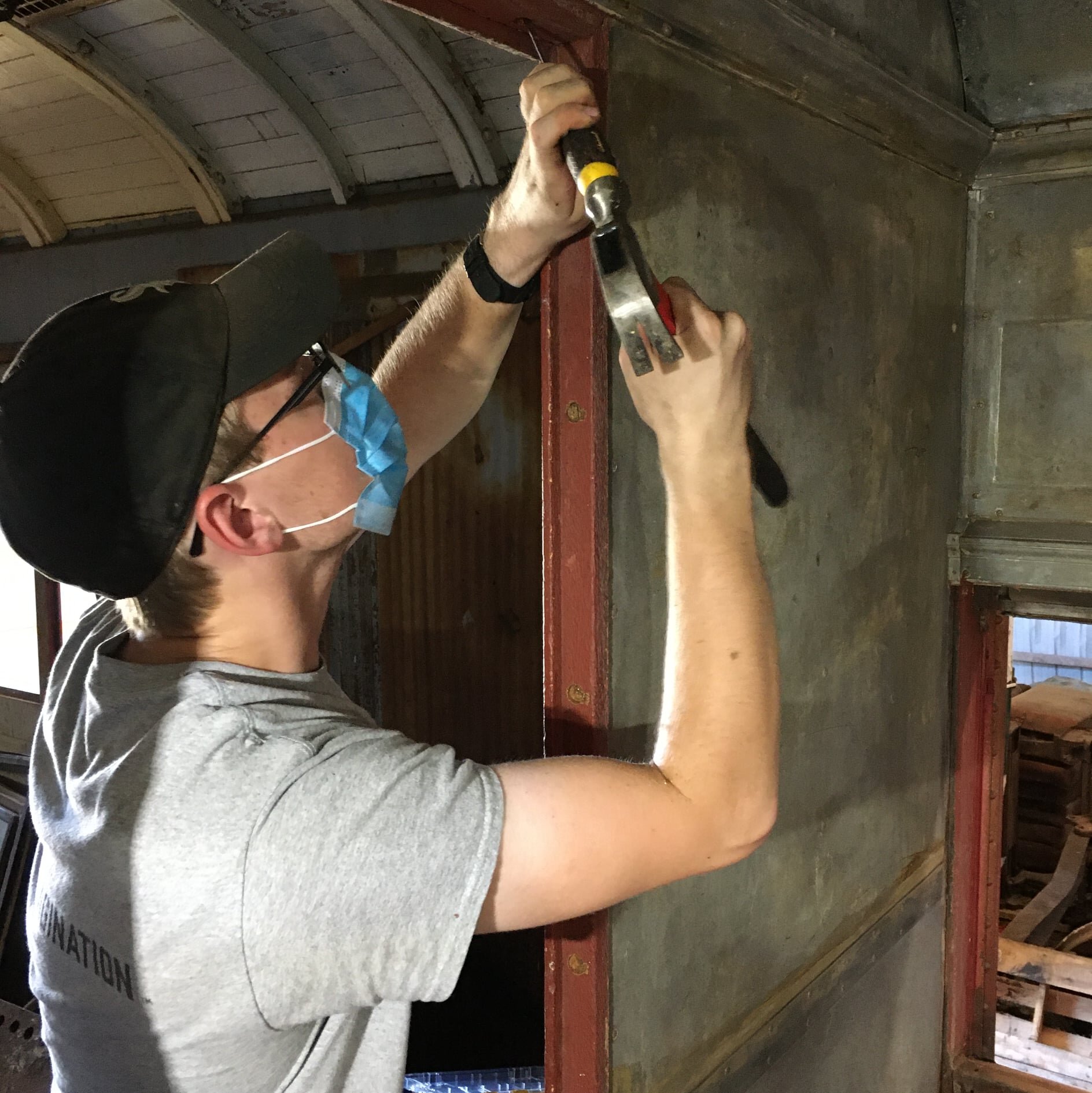
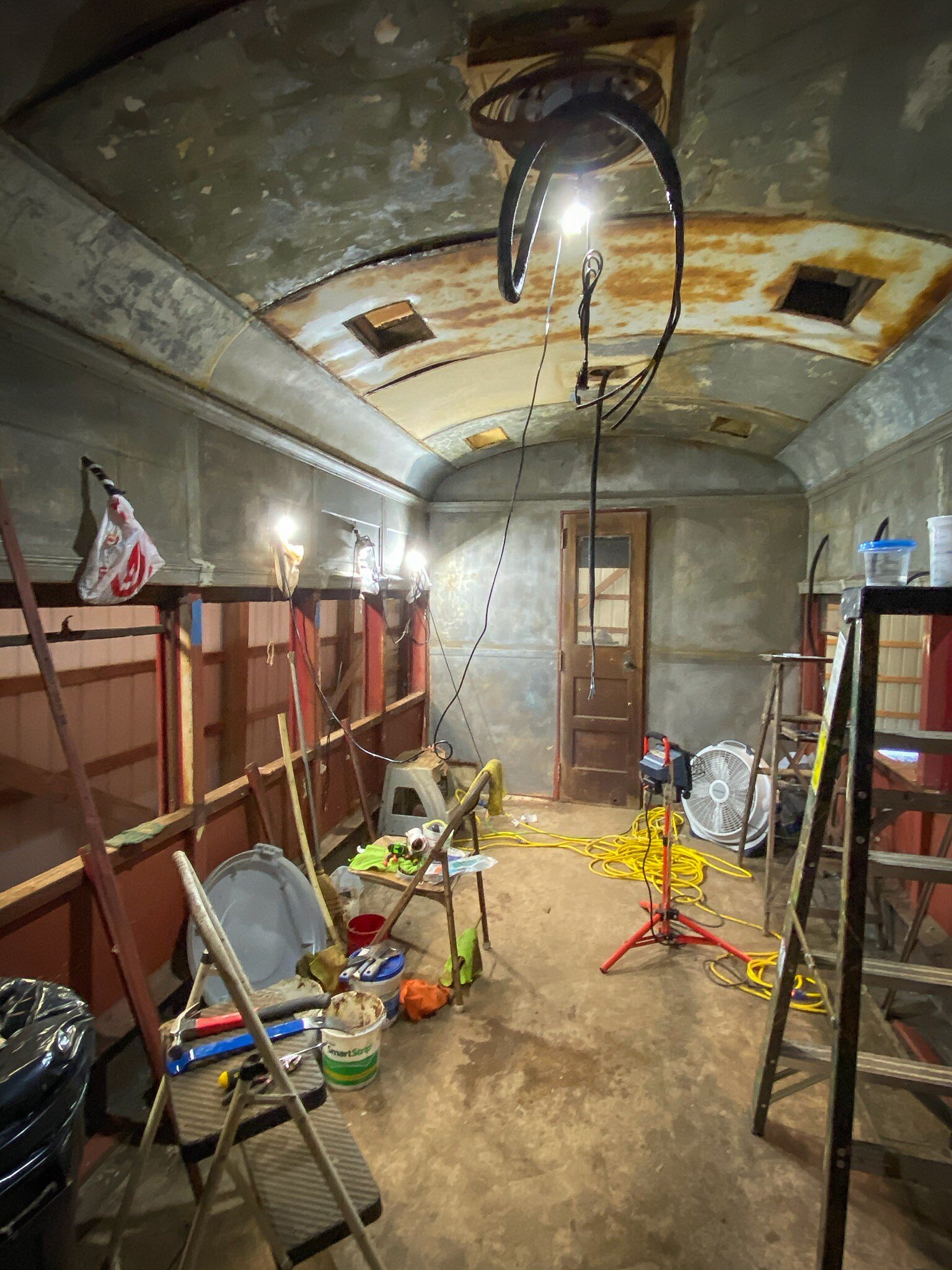
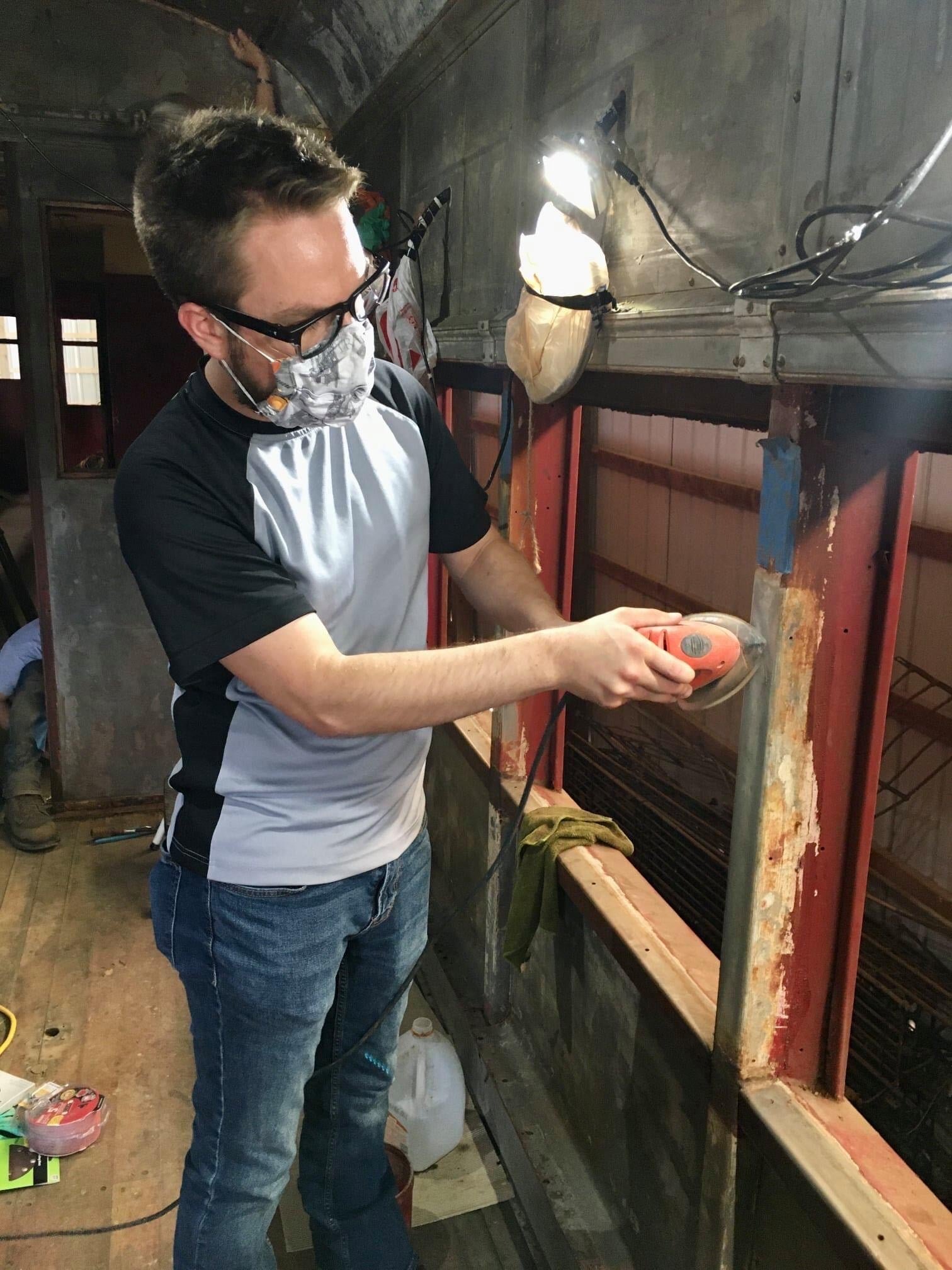
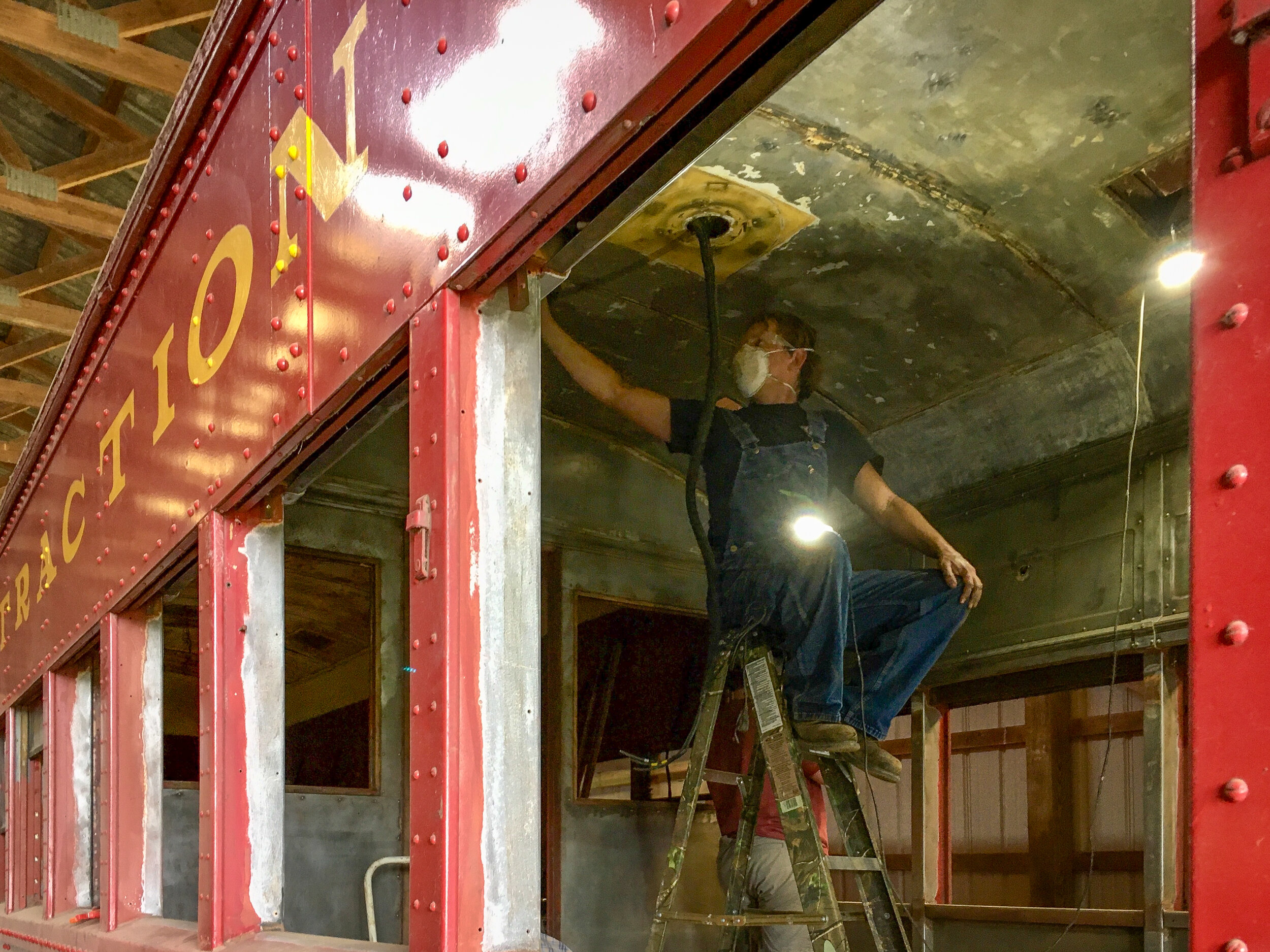
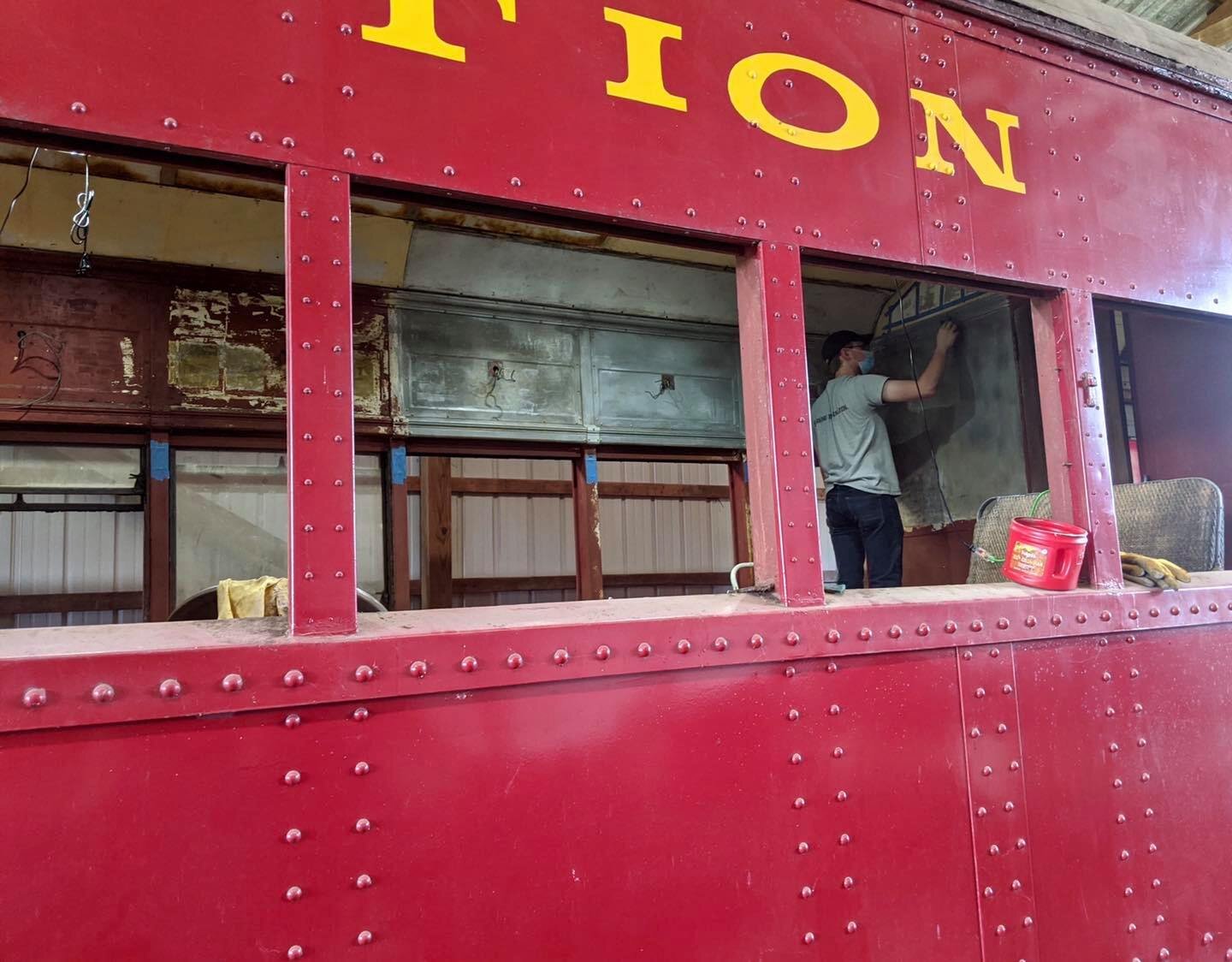
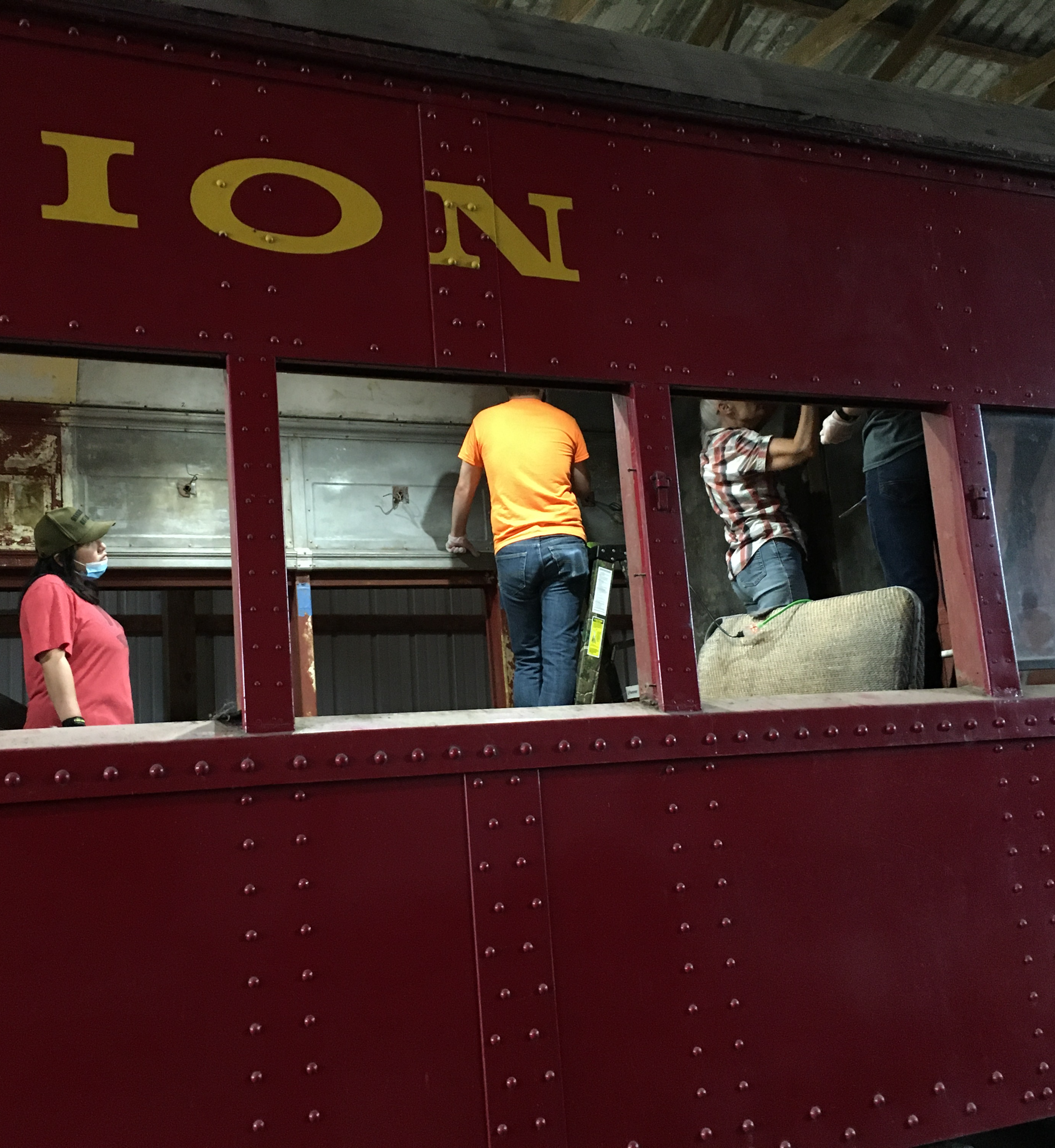
The spring and summer of 2020 subsequently saw months of preparation work - the keystone of a quality restoration. Volunteers stripped old paint and scrubbed the interior, which was followed by sanding and tedious detail work with small tools. The molding and patterned, metal panels required extensive work to reach all the small crevices, compounded by multiple layers of paint and dirt. A new ceiling panel was also installed where one had originally corroded through the material. Ceiling screws were applied to firmly secure all panels in their proper position.
After weeks of detailed preparation and a weekend of degreasing and masking, the smoking section was ready for primer.
In September, volunteers masked and degreased the interior - another tedious step in preparation. With the preparation work complete, primer was applied using a spray gun. The white primer dramatically changed the appearance of the interior. Next, masking was applied to the walls in order to paint the ceiling.
Comparison of an original sample found beneath a light fixture in No. 429 and its sister No. 437 found a match - a creamy-golden color known as “Tarnished Trumpet”. Once the ceiling color was cross-examined and confirmed, two coats were applied in-between sanding with a high-gloss finish. Sanding the first coat will ensure a smooth finish to reflect with the original, warm lighting.
The primer provided for a starkly contrasting environment from the as-found condition.
Next, the masking was removed and the walls were lightly-sanded. Per original practice, a wood-graining base was applied with brushes to simulate the original appearance. A red-brown color was utilized as opposed to the original yellow-orange, as the red mahogany wood stain and red-brown base closely simulated original faux wood-grain samples when tested prior.
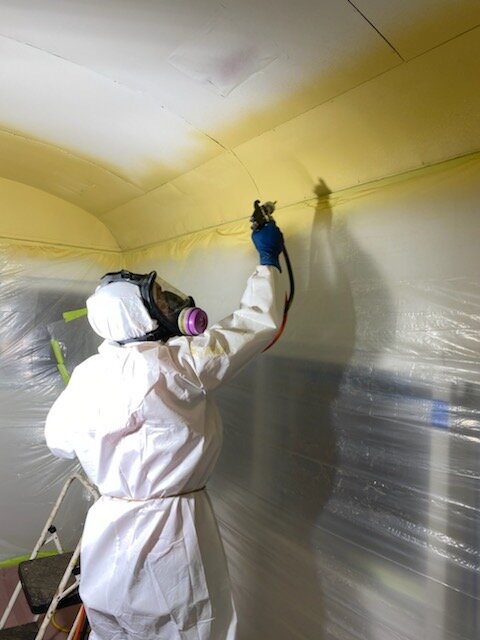

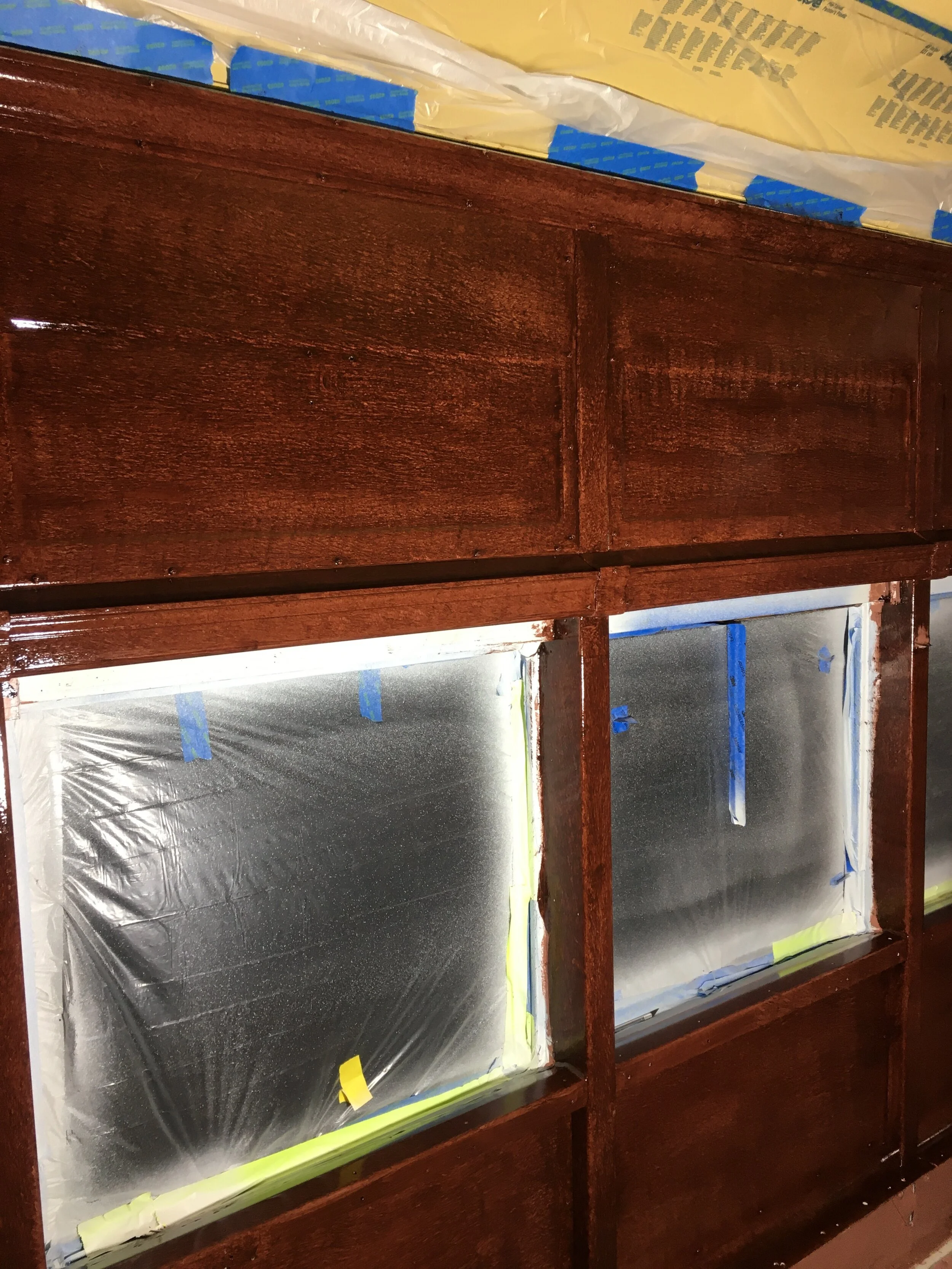
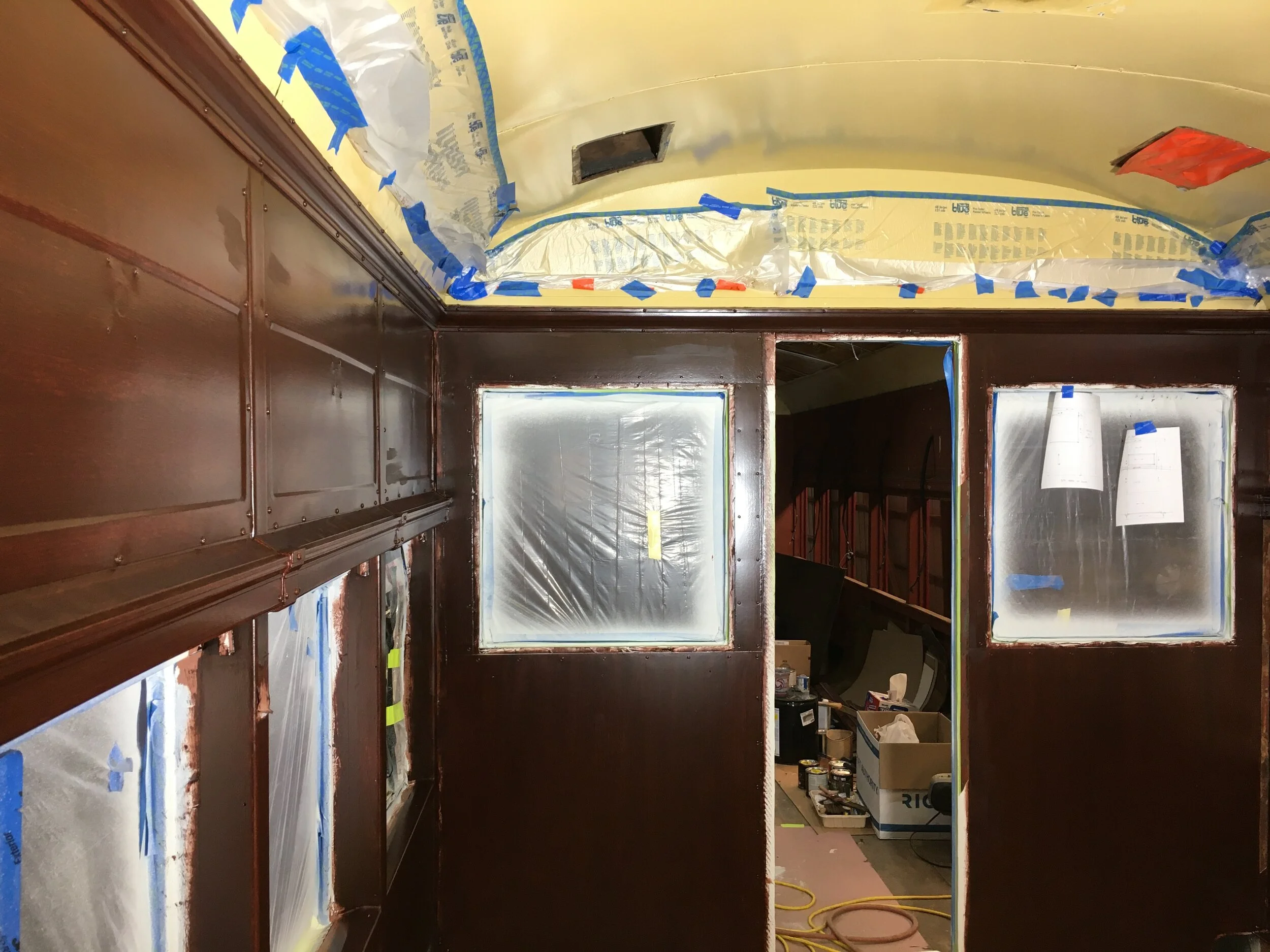
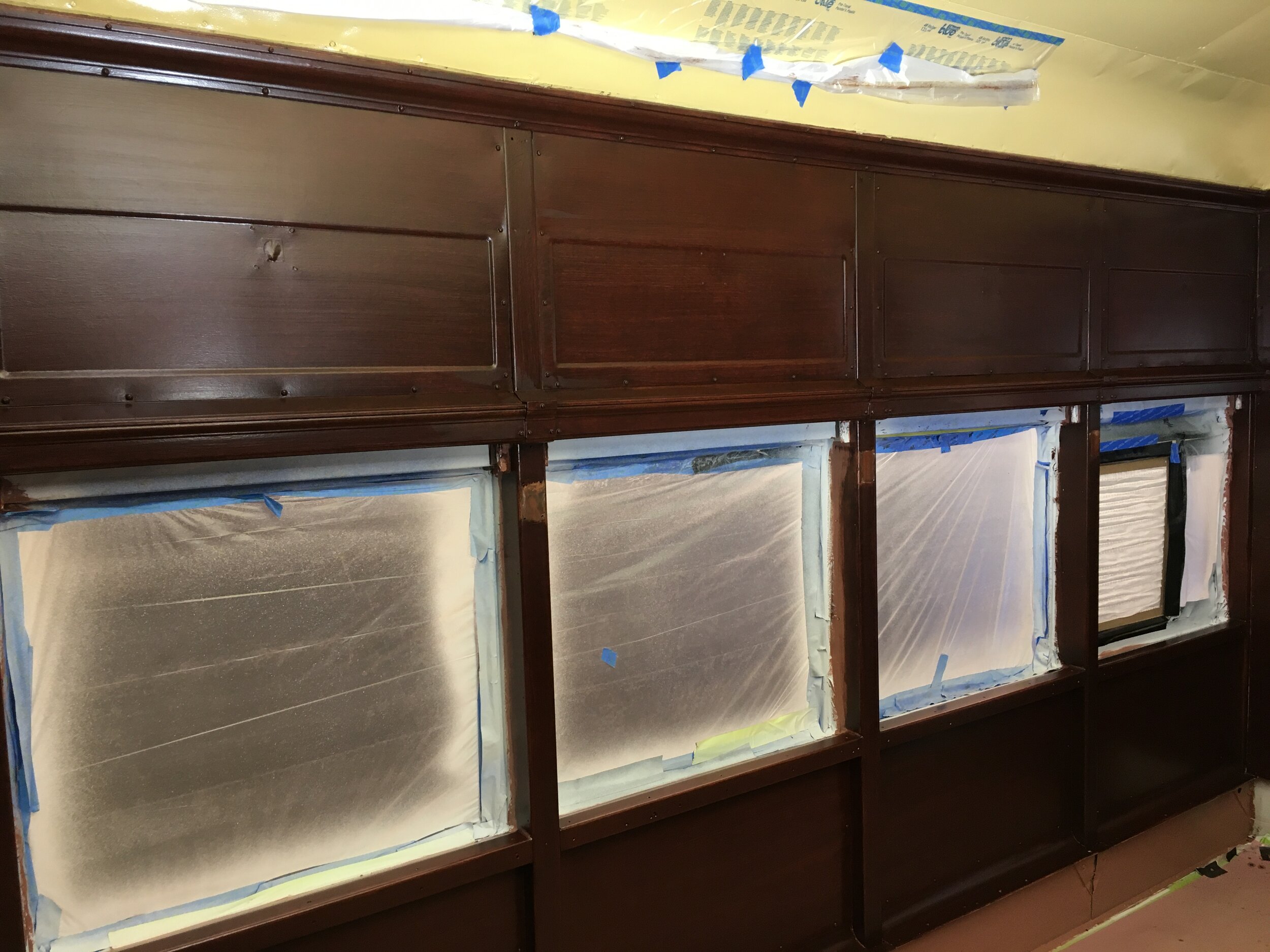

Following the wood-graining base, the real fun took place and the interior finally began to take shape. Stain was applied with brushes imported from England - using natural fibers to ensure the best result. Long-haired brushes were then flicked repeatedly onto the surface to give it texture - a process known as “flogging”. After the stain had dried, a patterned brush of the mottler variety was used with a light, secondary coat of stain to simulate the wood-grain.
Thanks to great preparation work and planning, the application of paint and stain occurred in short order. Next steps will involve installing a brown, linoleum floor and base, mahogany baton strips on the ceiling seams, light fixtures, period advertising, windows, and painted ventilator covers. This work is expected to be completed fairly quickly.
Phase Two
After acquiring the steel work table, the group switch is set into place to begin inspection and disassembly.
Thanks to a Heritage Support Grant provided by the Indiana Historical Society and made possible by Lilly Endowment, Inc., Phase Two, the mechanical and electrical restoration of the car to operating condition, has begun. A steel table was acquired and delivered on site. This table will serve the organization for decades to come, and is necessary to support the heavy weight of the electrical components.
Having been salvaged from 1920s Chicago El cars, the electrical equipment being refurbished will be altered to closely resemble the car’s originals, which are long-gone. Having spent several years as a gravel pit office, No. 429 lost all of its underbody equipment, including trucks. A set of suitable trucks (metal housing which hold the wheels, bearings, suspension, and motors) were procured as part of the car’s acquisition along with suitable motors.
This grant will fund the rehabilitation of the group switch (equivalent to a transmission - regulating electric current to the motors that propel the car), the line switch (equivalent to a surge protector), and the air compressor (a large air pump necessary to generate compressed air for the brakes and other components).
Inspection and disassembly of the group switch has begun under the supervision and guidance of industry veterans and volunteers with electrical expertise. The switch is being throughly documented and systematically disassembled for refurbishment. In overall good condition, this switch will serve the car for years to come.
Next Steps
Work continues to return interurban No. 429 to operating condition in its 1925, as-built appearance. Imagine the journeys and conversations Hoosiers had here traveling everyday across the Hoosier state at 80 miles per hour.
This winter, work will focus on rewiring and re-conditioning the group switch along with the line switch. Final components of the smoking section interior will also be finished in a sheltered facility. Spring 2020 will see the installation of hardware and equipment underneath No. 429, as fundraising continues throughout the winter alongside weather-suitable preparation work. Keep the momentum moving forward by making a tax-deductible contribution or applying to volunteer, today!


